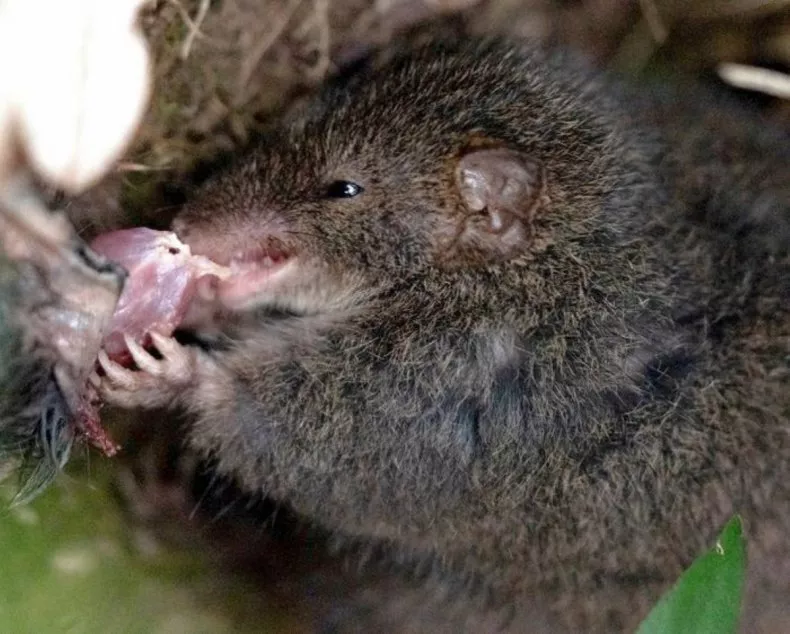Tiny Australian mammals have been observed eating each other during grueling 14-hour mating sessions, that ultimately result in the males’ death.
The bizarre behavior was first observed by Sunshine Coast Council employee Elliot Bowerman, who had been on a hike in the New England National Park at the time, an article on The Conversation reported. Emerging from the bushes, he saw a small mammal dragging the carcass of another. The mammal then proceeded to eat the other dead animal. He also noticed there seemed to be a lot of these mammals grouped today at this time of day. While cannibalism in mammals has been observed before, it is unusual to observe so many of the small mammals gathered together during the day.
Later, a research team lead by Andrew M. Baker, an associate professor in ecology and environmental science at Queensland University of Technology, observed a video of the behavior that Bowerman had taken on a cell phone. The species are known as antechinus. They are small marsupials, which are a group of mammals endemic to Australia, from the same family as the kangaroo.
Baker realized that this incredibly unusual behavior is rarely seen in the wilderness. Findings into the behavior have been published in the journal Australian Mammalogy.
“During the breeding season, male and females mate promiscuously in frenzied bouts lasting as long as 14 hours. Certain stress-induced death follows for all males as surging testosterone causes cortisol to flood uncontrolled through the body, reaching pathological levels,” Baker said in a summary of the findings. “The males drop dead, which provides an opportunity for cheap energy gain via cannibalism for still-living males and pregnant or lactating female antechinuses. While cannibalistic behavior has been reported in some dasyurids (the family which includes antechinuses, quolls and Tasmanian devils), it is very rare to observe in the wild.”
Male antechinus drop dead after the breeding season every year. This is because they are literally poisoned by their raging hormones, according to Baker.
The stress hormone known cortisol, alongside testosterone, rises to obscene levels during the mating period. This surge in testosterone then prohibits the body from dealing with the high levels of cortisol. This results in it flooding the body to the degree that it causes organ failure for the male mammals.
Baker theorizes that these dead carcasses provide an easy energy source for fellow antechinus. And so, the surviving mammals turn to cannibalism.
“Each species may benefit from eating dead males of the other. For the earlier-breeding antechinus species, it may mean that pregnant and lactating females can get high-energy food by cannibalizing the males of the later-breeding species as they die off,” Baker said. “For the later-breeding species, both sexes may take the opportunity to cannibalize dead males of the earlier-breeding species, to help stack on weight and condition before their own breeding period commences.”
Although it is still uncertain whether it is males or females eating the dead antechinus, Baker believes it is most likely males.
“Although males are believed to eat less than females during breeding, both sexes are known to eat at that time,” Baker said. “The antechinus seen feeding on its dead comrade appeared vigorous and large-bodied, but it had damage to its right eye and hair loss on its arms and shoulders, which is associated with stress-induced decline in males. He was perhaps destined soon to become somebody else’s meal.”
This article by Robyn White was first published by Newsweek on 18 January 2024. Lead Image: A picture shows a sex-crazed Antechinus eating another of its own species, after it dropped dead due to raging hormones. ELLIOT BOWERMAN.
What you can do
Help to save wildlife by donating as little as $1 – It only takes a minute.





Leave a Reply